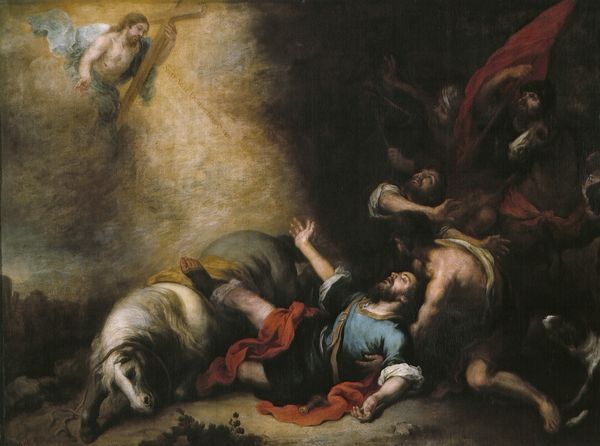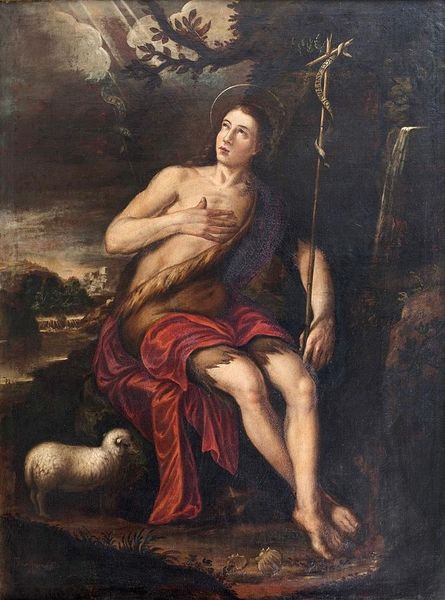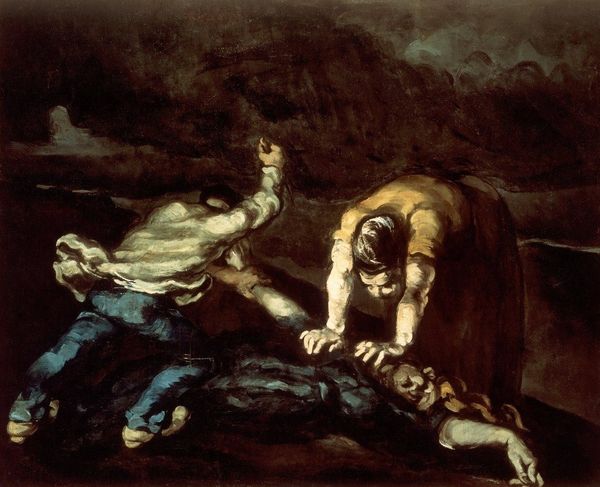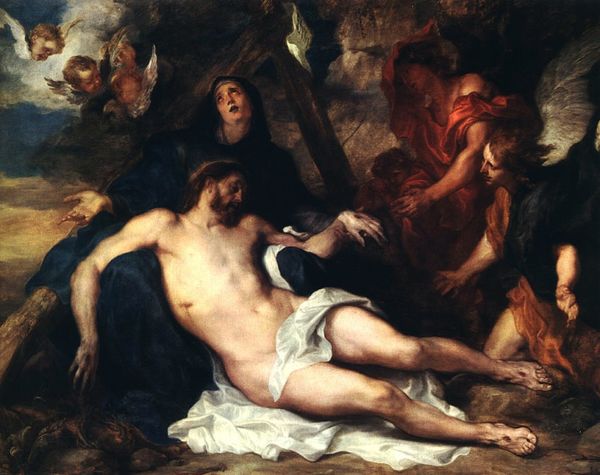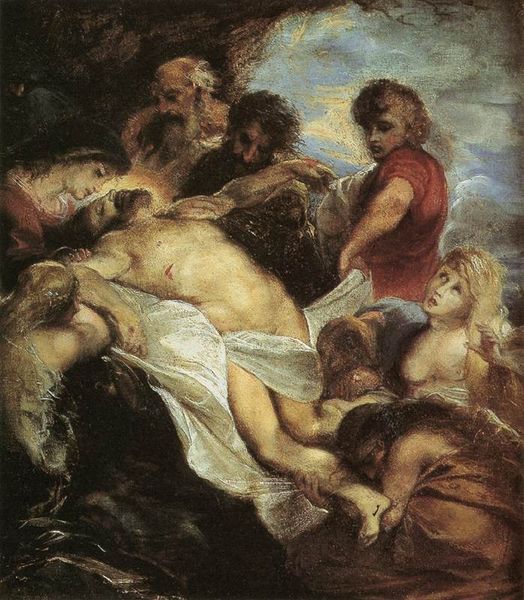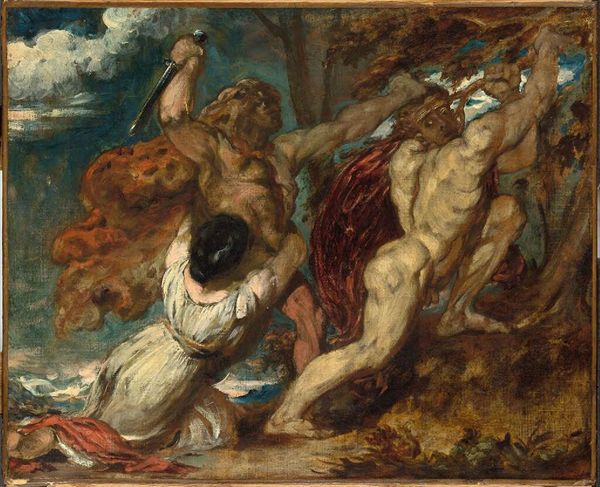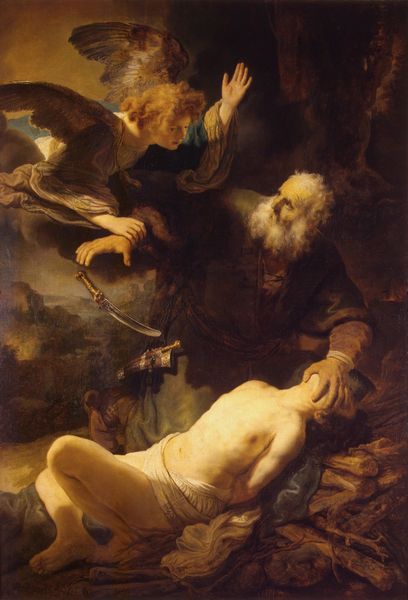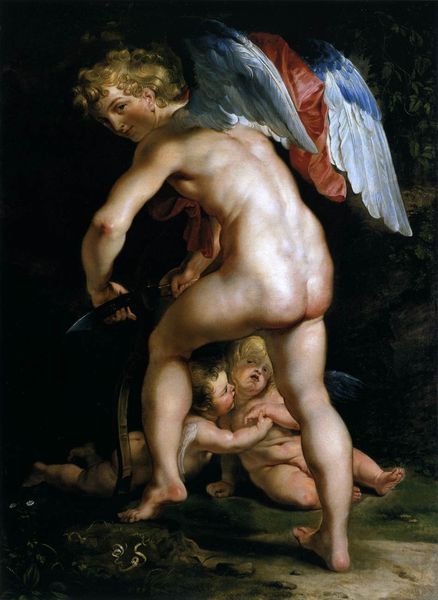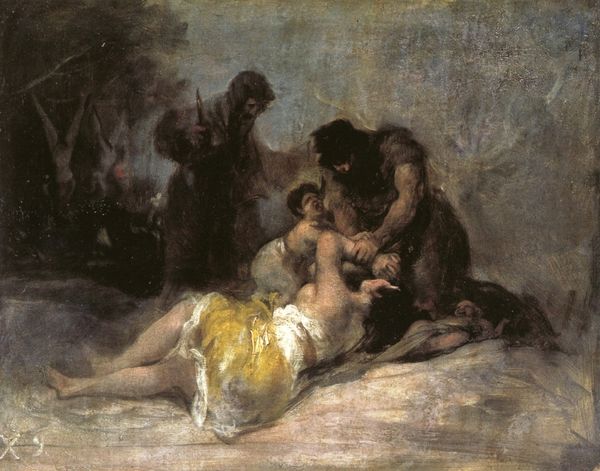
painting, oil-paint
#
painting
#
oil-paint
#
figuration
#
oil painting
#
jesus-christ
#
romanticism
#
christianity
#
history-painting
#
virgin-mary
#
christ
Copyright: Public domain
Curator: Standing before us is Eugène Delacroix's poignant "Pietà," painted in 1850. It's currently housed at the National Gallery in Oslo. Editor: The immediate feeling is overwhelming sorrow. There's this muted palette, dominated by somber browns and blues, but pierced by the red cloak that speaks to a depth of emotion that almost feels gothic, yet it carries itself like something softer. The figures almost seem to melt into the dark background, which really amplifies the mood. Curator: Delacroix, a leading figure of the Romantic movement, often explored themes of suffering and the sublime, and "Pietà" certainly exemplifies this. Here, we witness a clear engagement with Christian iconography, depicting the Virgin Mary cradling the lifeless body of Christ. Editor: Right, the pyramidal composition, while traditional, is energized by Delacroix's loose brushwork, which actually adds to the feeling of raw grief. I'm struck by the interplay of light and shadow here; it’s more than chiaroscuro—it evokes emotional and existential weight. How do you feel this rendition speaks with its historical precedents? Curator: Well, historically, depictions of the Pietà were often commissioned by religious institutions for didactic or devotional purposes, this painting gains prominence during a period of growing social upheaval across Europe. Editor: Interesting. This version feels like an intimate and private tragedy compared to the more public displays that came before. This painting seems to embrace that same turmoil, yet on a deeply personal scale, reflecting the turbulent and subjective Romantic era. Curator: That interpretation fits. This painting showcases an era where historical artistic roles could not hold their preeminence given how fundamentally the social climate of the era was changed due to shifts in social norms and historical change. Editor: Reflecting upon it, this interpretation does something far greater, reflecting not simply on this tradition, but setting out to change its perception forever. Curator: A compelling point. A testament to Delacroix’s genius and to his capability to embrace what made him, well, him.
Comments
No comments
Be the first to comment and join the conversation on the ultimate creative platform.
